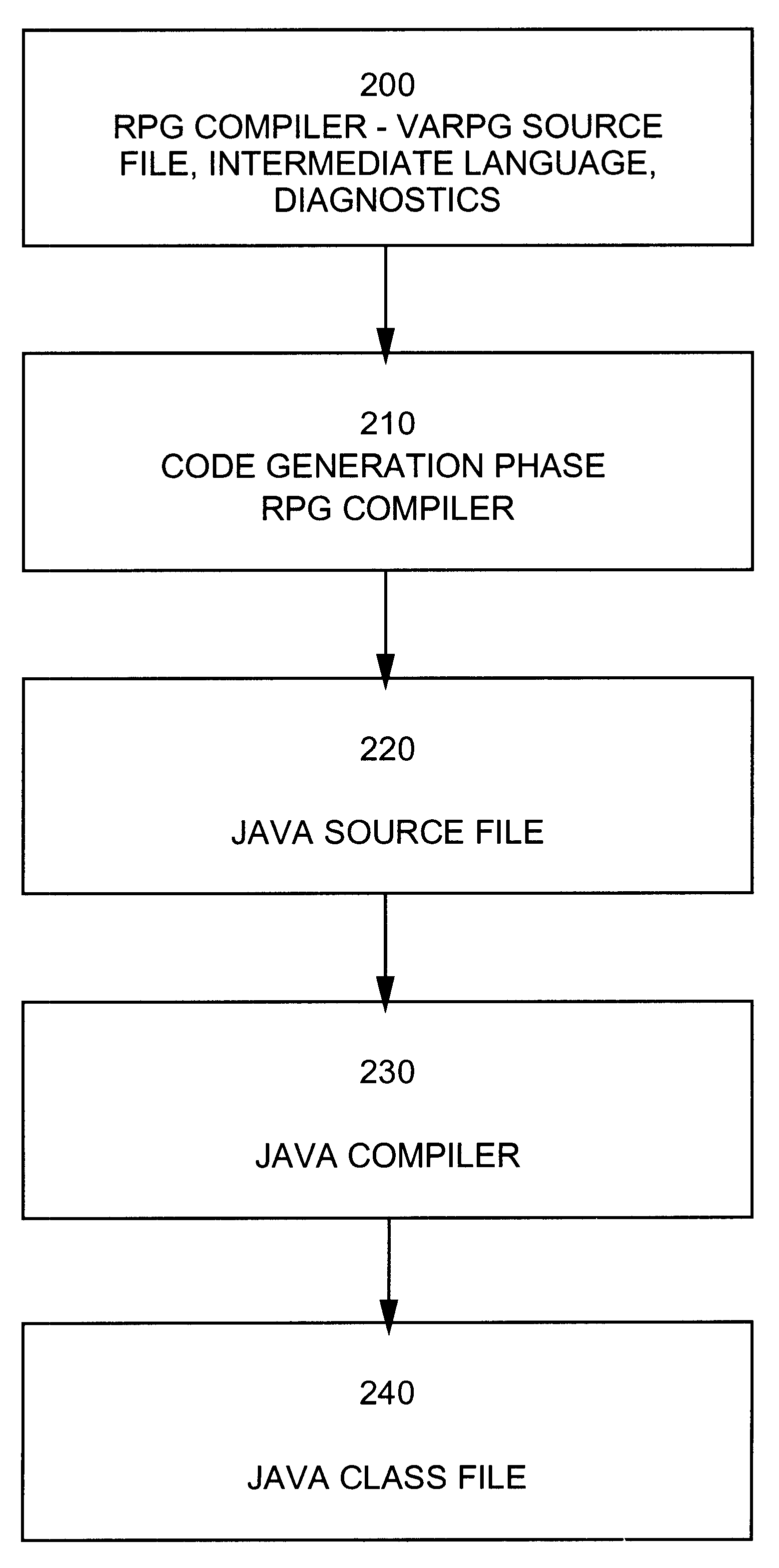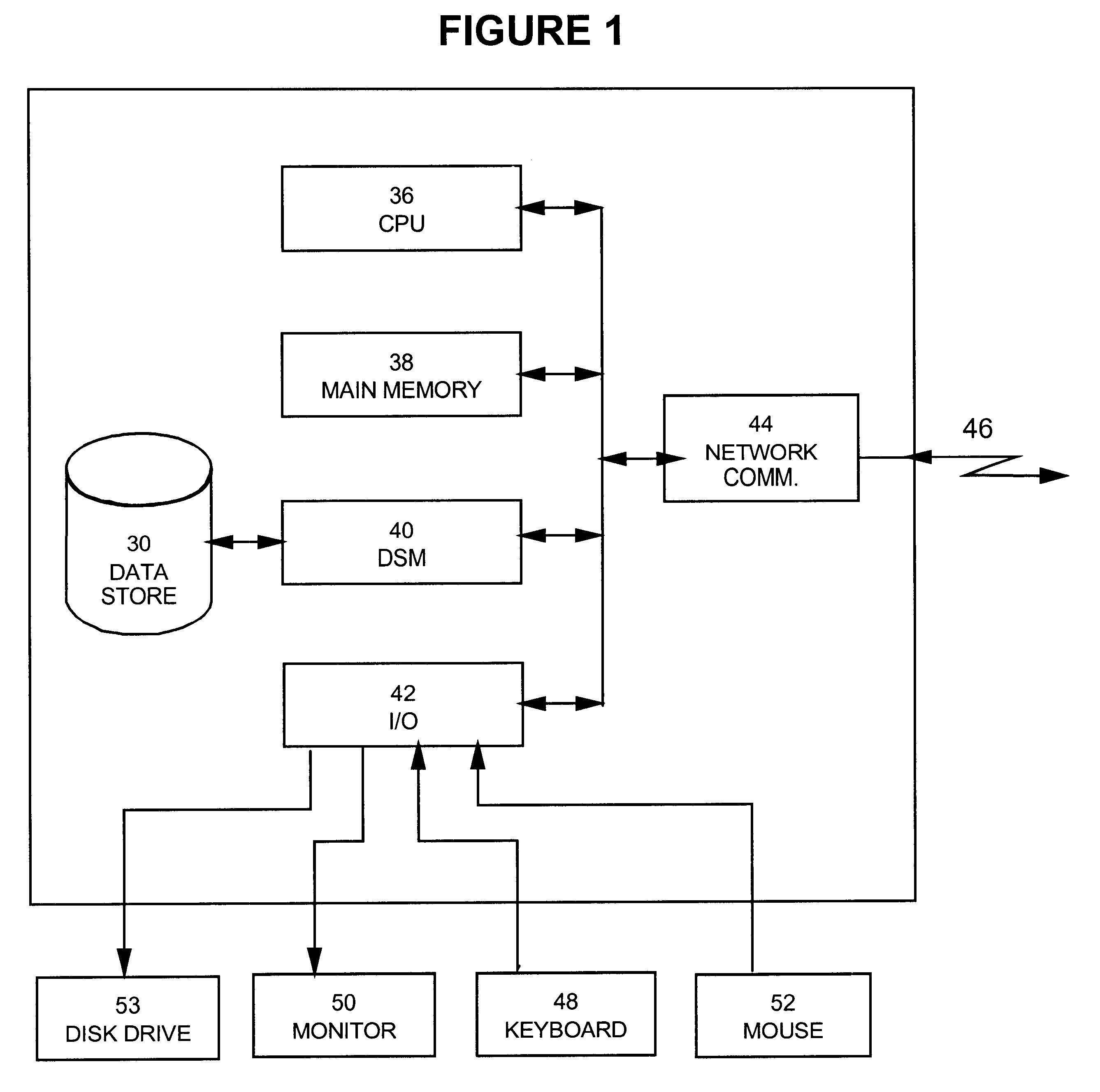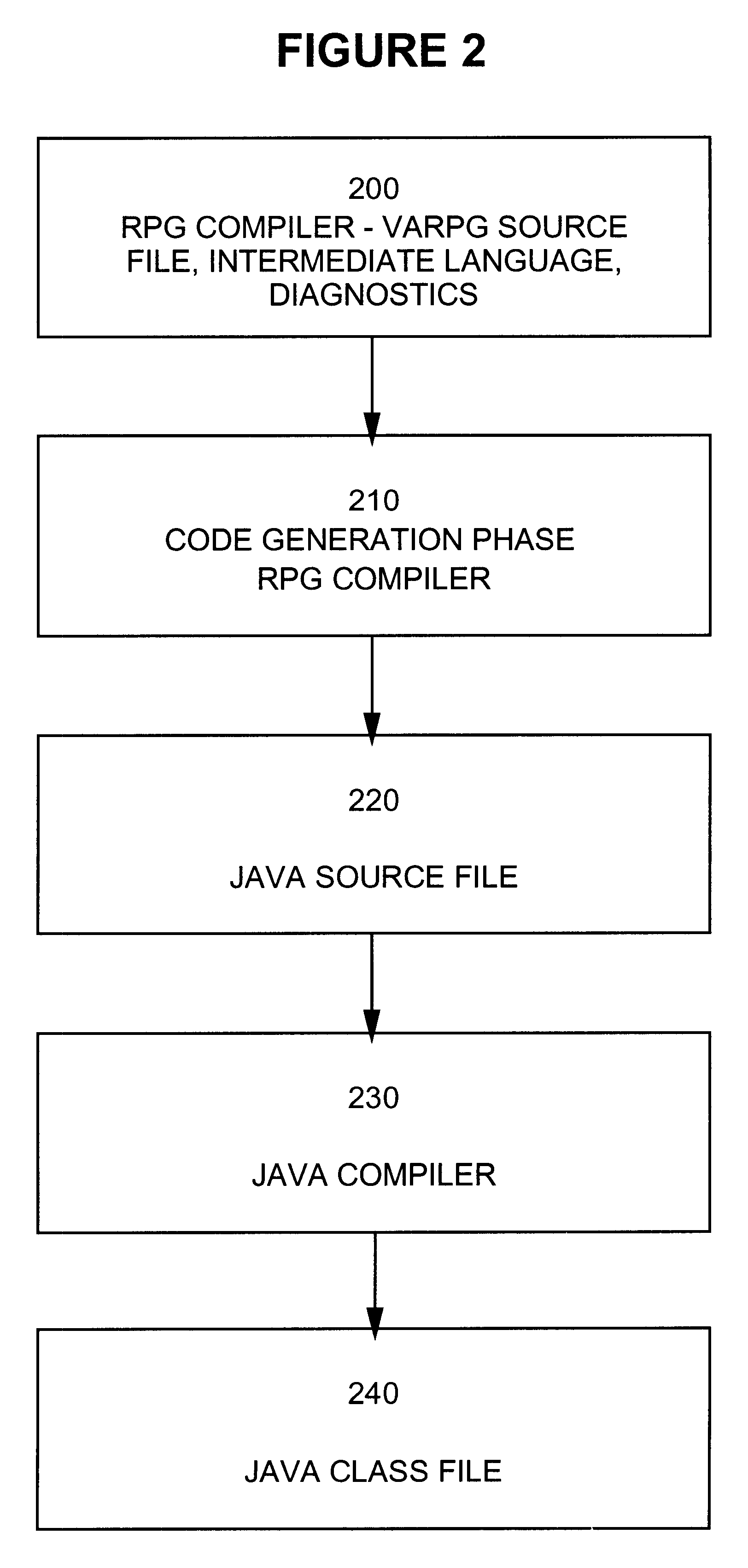Report program language source code translation to object-oriented language source code which emulates report program language behavior
a program language and object-oriented language technology, applied in the field of high-level computer programming languages, can solve the problems of oop languages not inherently interfacing smoothly with relational databases, their investments becoming obsolete, and it is extraordinarily uneconomical to transfer all legacy relational data into oodbs
- Summary
- Abstract
- Description
- Claims
- Application Information
AI Technical Summary
Problems solved by technology
Method used
Image
Examples
example 1
The Java Integer class contains a static method called toString, which accepts an int parameter, and returns a String object.
In the above example, the EXTPROC keyword tells the compiler that the method was not generated by VARPG. It also indicates that the method name is `toString`, and that it is found in class `java.lang.Integer. The `O` in column 40 and the CLASS keyword tell the compiler that the method returns an object, and the class of that object is `java.lang.String`. The STATIC keyword tells the compiler that the method is a static method, meaning that an Integer object is not required to call the method. The datatype of the parameter is specified as 10I, which maps to the Java int datatype, and because the parameter is an int, it must be passed by value, and hence the VALUE keyword is specified.
example 2
This method accepts two objects as parameters. `O` is coded in column 40 of the D-specification, and the CLASS keyword specifies the class of each object parameter. The Java Integer class contains a static method called getInteger, which accepts String and Integer objects as parameters, and returns an Integer object.
Integer Integer.getInteger(String, Integer)
This method would be prototyped as follows:
example 3
The Java Integer class contains a method called shortValue, which returns the short representation of the Integer object used to invoke the method. The STATIC keyword is not specified because the method is not a static method. The method takes no parameters, so none are coded. The return value is specified as 5I, which maps to the Javashort datatype.
PUM
 Login to View More
Login to View More Abstract
Description
Claims
Application Information
 Login to View More
Login to View More - R&D
- Intellectual Property
- Life Sciences
- Materials
- Tech Scout
- Unparalleled Data Quality
- Higher Quality Content
- 60% Fewer Hallucinations
Browse by: Latest US Patents, China's latest patents, Technical Efficacy Thesaurus, Application Domain, Technology Topic, Popular Technical Reports.
© 2025 PatSnap. All rights reserved.Legal|Privacy policy|Modern Slavery Act Transparency Statement|Sitemap|About US| Contact US: help@patsnap.com



